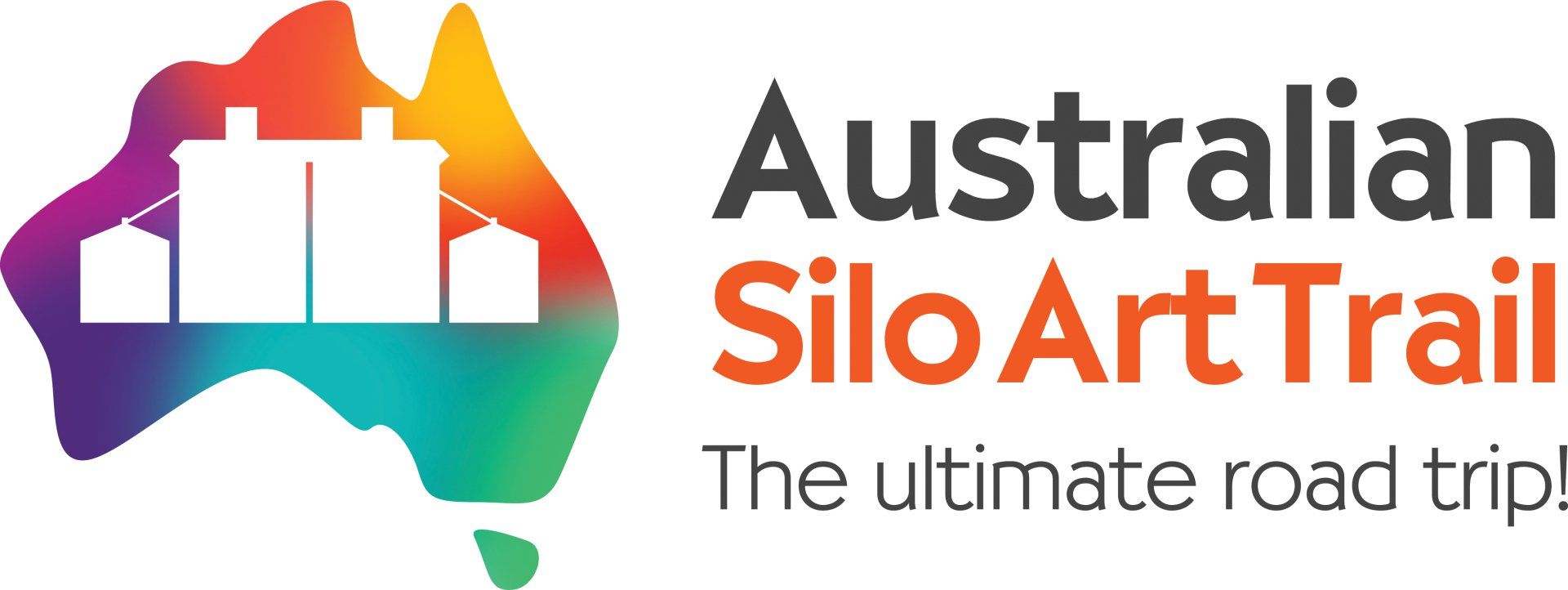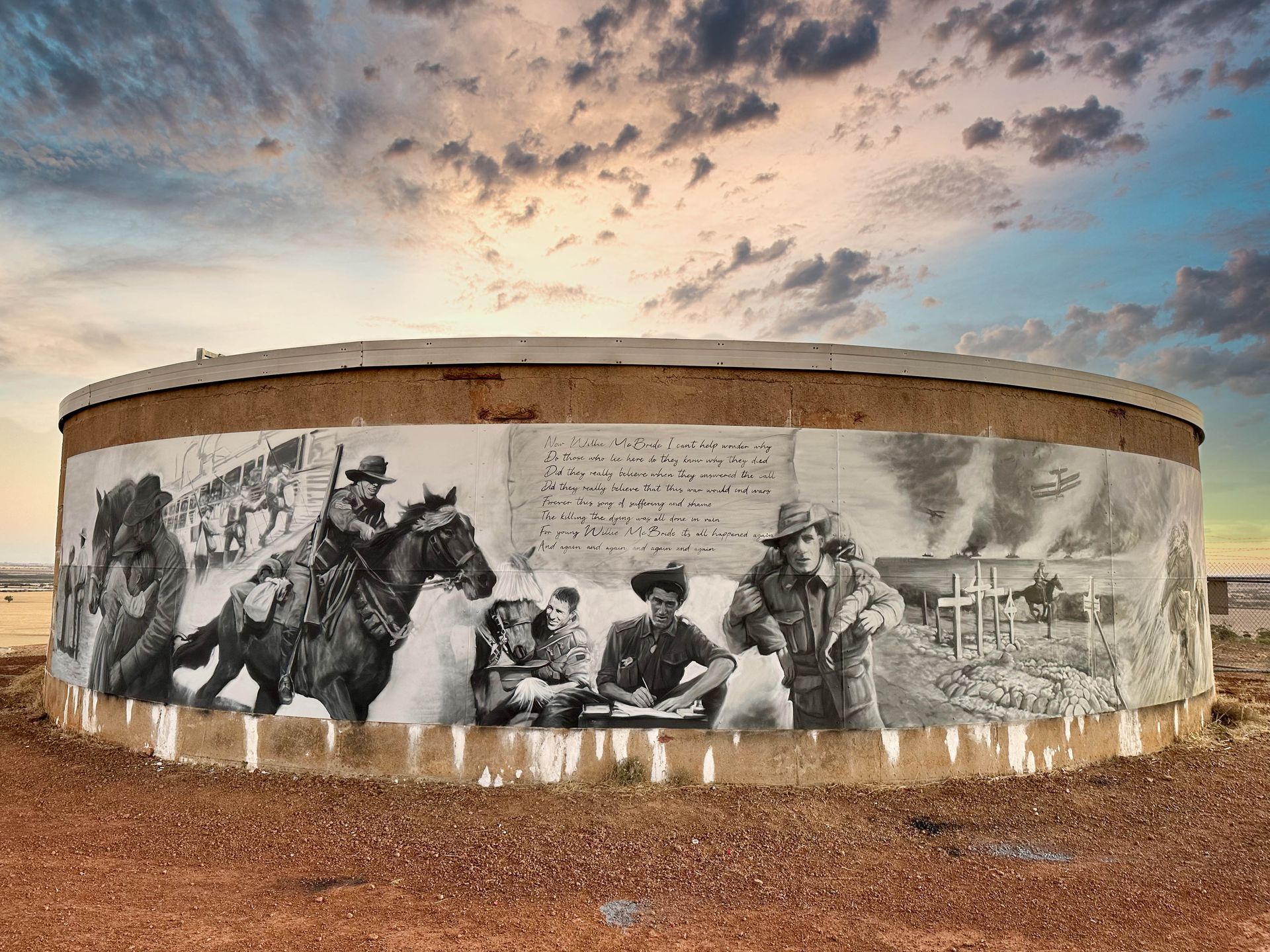
Photo by: Jacob Butler (Shakey)
Yeerakine Rock - Kondinin Water Tank Art - Western Australia
Artist: Jacob Butler (Shakey)
Location: Sloan Road, Kondinin, WA (4WD access only)
All Stories Written by Artist Jacob Butler (Shakey)
Every year Kondinin holds an Anzac Dawn Service that attracts hundreds of people to Yeerakine Rock to watch the sunrise and pay their respects. To accompany the service, a Light Horse Monument was erected in 2015, the 100th anniversary of Gallipoli, to symbolise the commitment & sacrifices of all serving personnel who came from the wheatbelt region.
The mural is painted on the water tank alongside the monument and tells the story of a soldier leaving his family during the drought of 1914. It shows him leaving from Fremantle to serve as a soldier in the Great War, his life as a soldier & his eventual return home.
Painting the mural proved to be quite challenging due to the constant strong winds and heat, which don’t mix well with spray paint! The spray-can featured in the mural video was one of the many that randomly exploded due to the high temperatures.
The biggest challenge was condensing the madness of World War 1 into a handful of images. The imagery painted came about after research and consultation with the local community members and historians. It’s impossible to include every angle and story, so here are few insights:
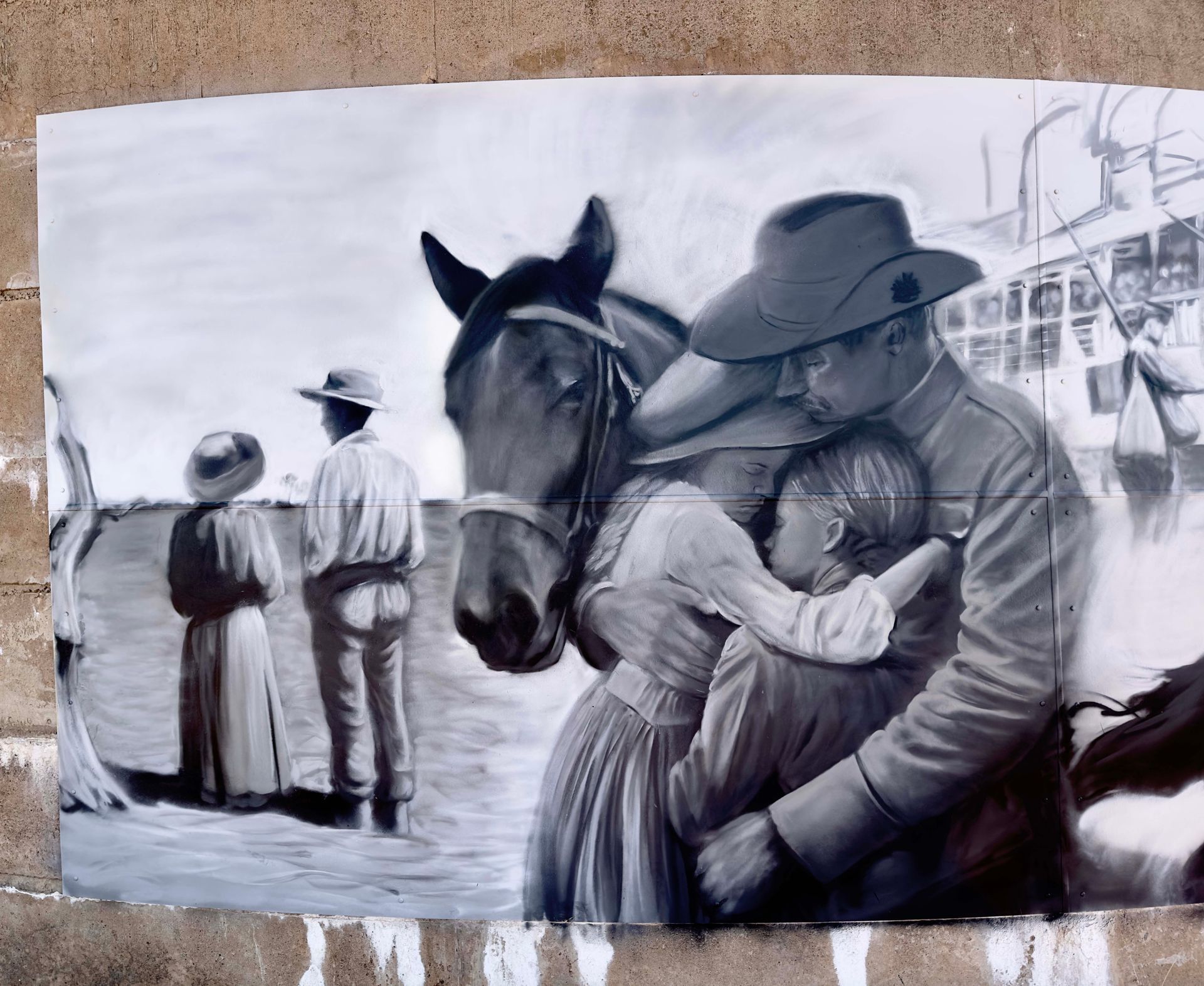
Scene 1 Farewell
First settlers came to the Kondinin area in 1910 & in the years prior to World War I. The pioneer farmers toiled to clear their land & were looking forward to harvesting their small acreages sown. However, these early farmers were struck by the misfortune of a drought (one of the driest ever recorded) and the advent of the war in close succession.
Due to the disastrous drought in the season of 1913-1914 and the advent of World War 1, land development around Kondinin & other wheatbelt areas slowed down. Many of the early residents joined the armed forces and labour became scarce. Some of those who enlisted were able to make arrangements for somebody to look after their properties during their absence, but others not being able to arrange this, simply walked off their properties to answer the call to arms.
Two thirds of Australians that answered the call to arms in World War I became casualties, and this had a long-lasting effect on them, their families and society.
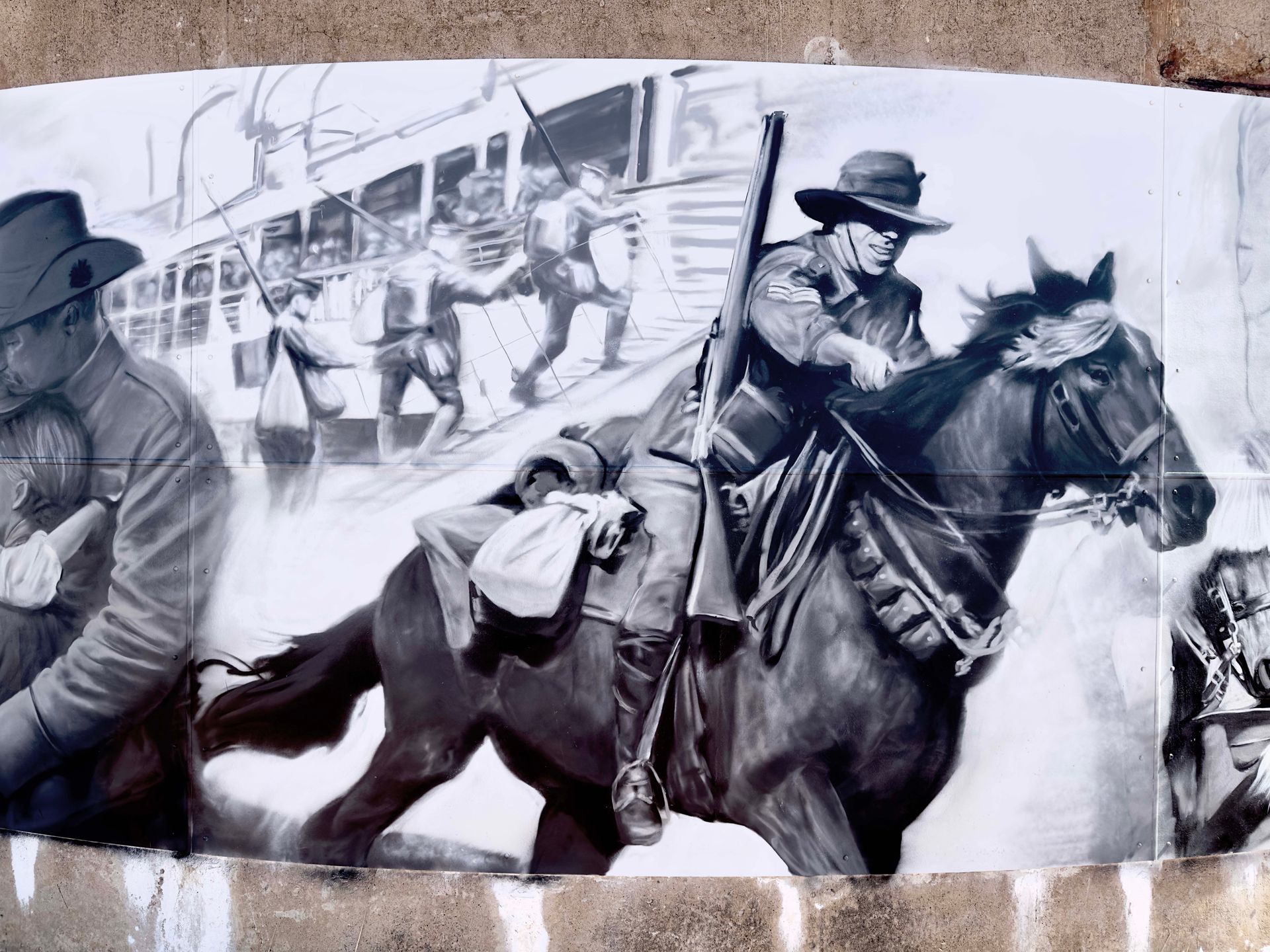
Scene 2 Lighthorsemen
Many soldiers of the Wheatbelt left their families at their newly established farms and went straight to the Black Boy Hill Training Camp (near Greenmount), before departing to war from Albany or Fremantle Port. The Sykes brothers (Eustace, Bert and Reg), were one such family. There is a reference to them in the mural where you can see three men boarding at a dock.
This is representative of similar family commitments Members of the 10th Light Horse Regiment trained at various locations including Guildford, Claremont Showground & Rockingham before embarking for Egypt.
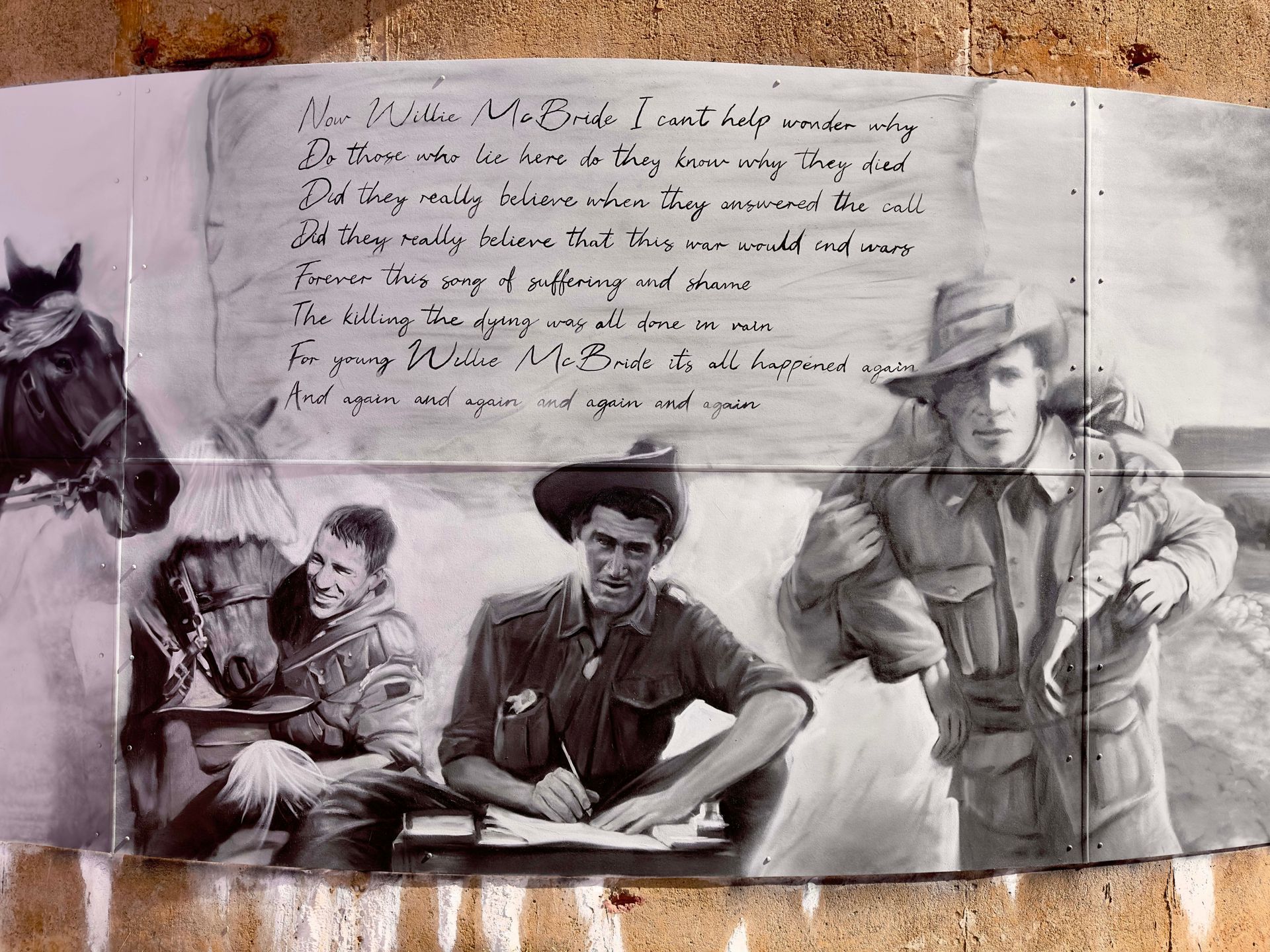
Scene 3 Letter
The Australian Light Horse were a skilled formation of mounted infantry. The men fought at Gallipoli (without their horses) and mostly served in Egypt and the Middle East. The unit contributed to the Allied victory against the Ottoman Empire in the Sinai and Palestine Campaign.
When attempting to depict the Light Horseman, I was fixated on the bravery and toughness that characterized these men as well as the bond that they had with their horses.
I digested movies, library archives, books and online journals for inspiration in order to depict Light Horse men accurately. A lot of the time the imagery that I came across contained no context or background information.
What I found particularly sad about the Light Horse Regiment in World War 1 was that none of the horses who accompanied the soldiers returned home. The horses would make the journey to war from farms or other locations. Surviving hell, their fate would be a cruel death in a foreign land. Knowing that the horses would be sold off to various Arab people & poorly cared for, some soldiers would choose to walk their horses into the desert, rifle in hand to offer them a better end to their life. I wanted to pay tribute to the special bond that the soldiers had with their horses.
I was stunned after being contacted by the family of the soldier depicted with his horse, as I since found out the soldier depicted was former President and Troop Sergeant Luke Dowell of the 7th Light Horse Gudagai Troop. Luke’s family was grateful that I came across his image and recognised his strong connection to his horse and portrayed it within the mural.
The Great War was said to be the war that ends all wars which is described in Eric Bogle’s song Green Fields of France. The lyrics of the song are depicted written by a soldier in reflection after witnessing the atrocities of the war.
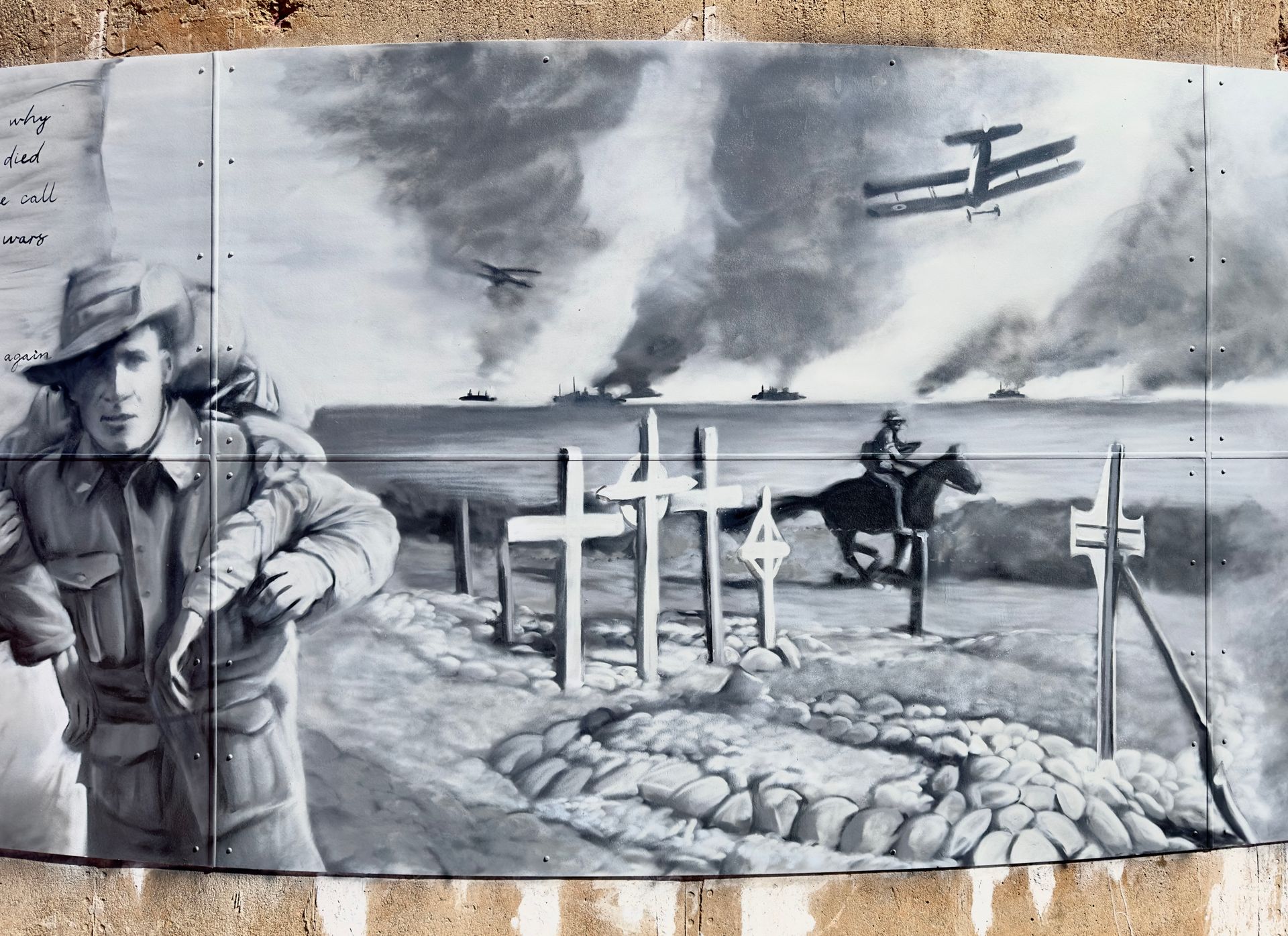
Scene 4 Gallipoli
It is estimated that 1000 to 1300 indigenous soldiers served in the Australian Imperial Force during the First World War, of whom around 250 to 300 made the ultimate sacrifice. Pictured in the mural is a tribute to indigenous soldier “Lewis Beaky Collard” who became a runner in the front lines in France in WW1, 1914. Beaky is pictured leaving behind him the graveyards of Gallipoli. Beaky has relatives living in Kondinin.
Tens of thousands of allied soldiers died on the Gallipoli Peninsular. When Christians, Jews or Indian Muslims died, they were buried, whenever possible either in cemeteries or isolated graves behind the front lines. If they died in battle, they were often left where they died as it was too dangerous to collect their bodies. In one instance, in May, an armistice was organised to bury the dead in no man’s land. These men were generally buried in mass graves in old trenches or ditches. Men who died on hospital ships were buried at sea. Sikhs and Gurkhas were often cremated.
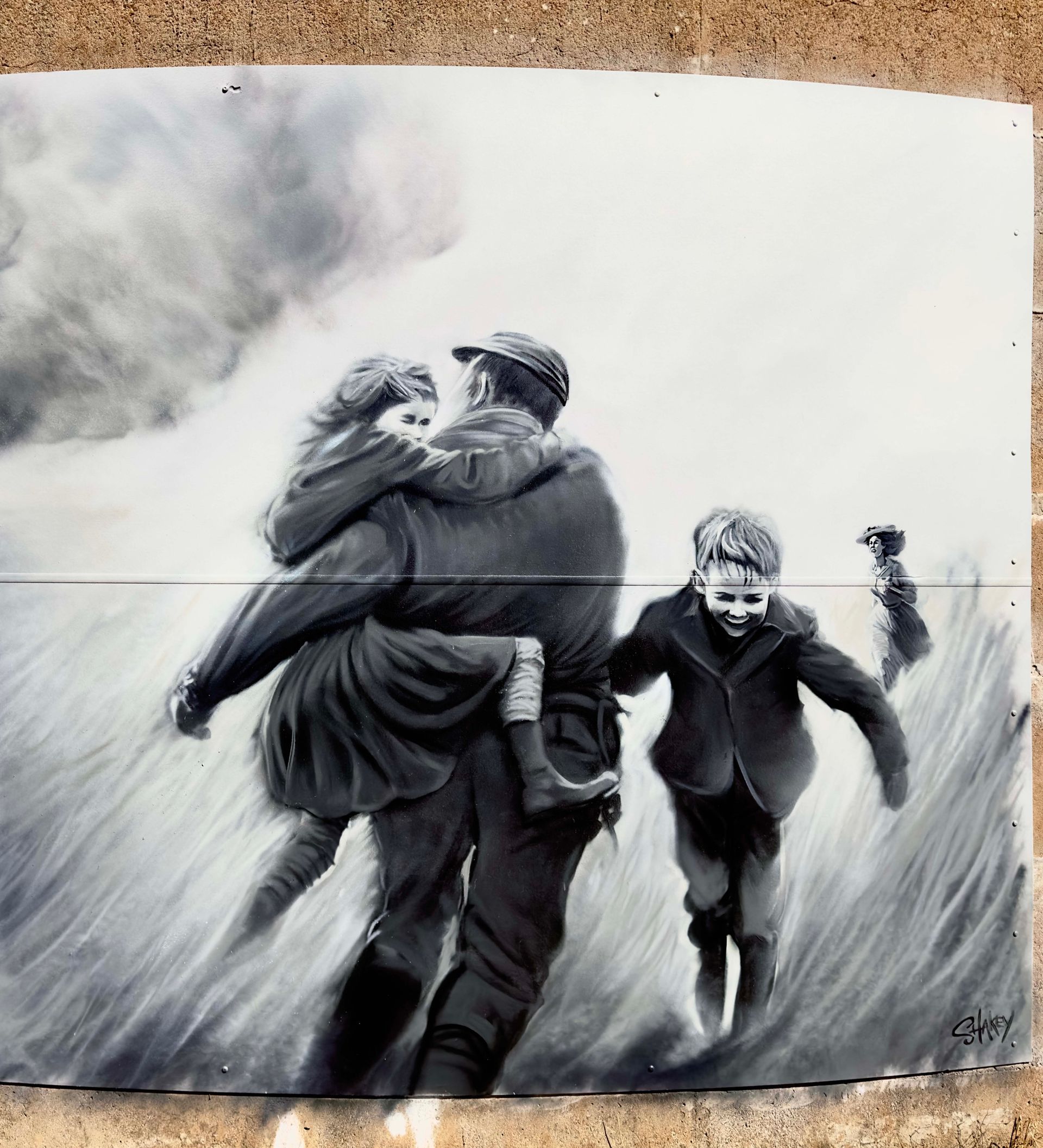
Scene 5 - Coming Home
Depicted is one of the few that made it home to his farm in the Wheatbelt. Unfortunately for the returned soldiers, life didn't get much easier.
The pioneers who came in or before 1914 no doubt expected to have reasonable security within five or ten years. World War 1 and the drought came upon them before their plans could progress. Conditional Purchase was in operation before the war, and after the war soldiers had blocks reserved for them (Soldier Settlement Scheme). Soldiers returning to their farms or other employment often had injuries & or diseases from their war service, post traumatic stress disorder (at that time titled “shell shock”) & issues relating to reconnecting with family & community.
Some positivity during the war on the home front included the railway arriving during March 1915 & a primary school opening mid - 1917. Post war, existing farms continued being developed & with new farmland opening up & the establishment of businesses, Kondinin’s population grew.
